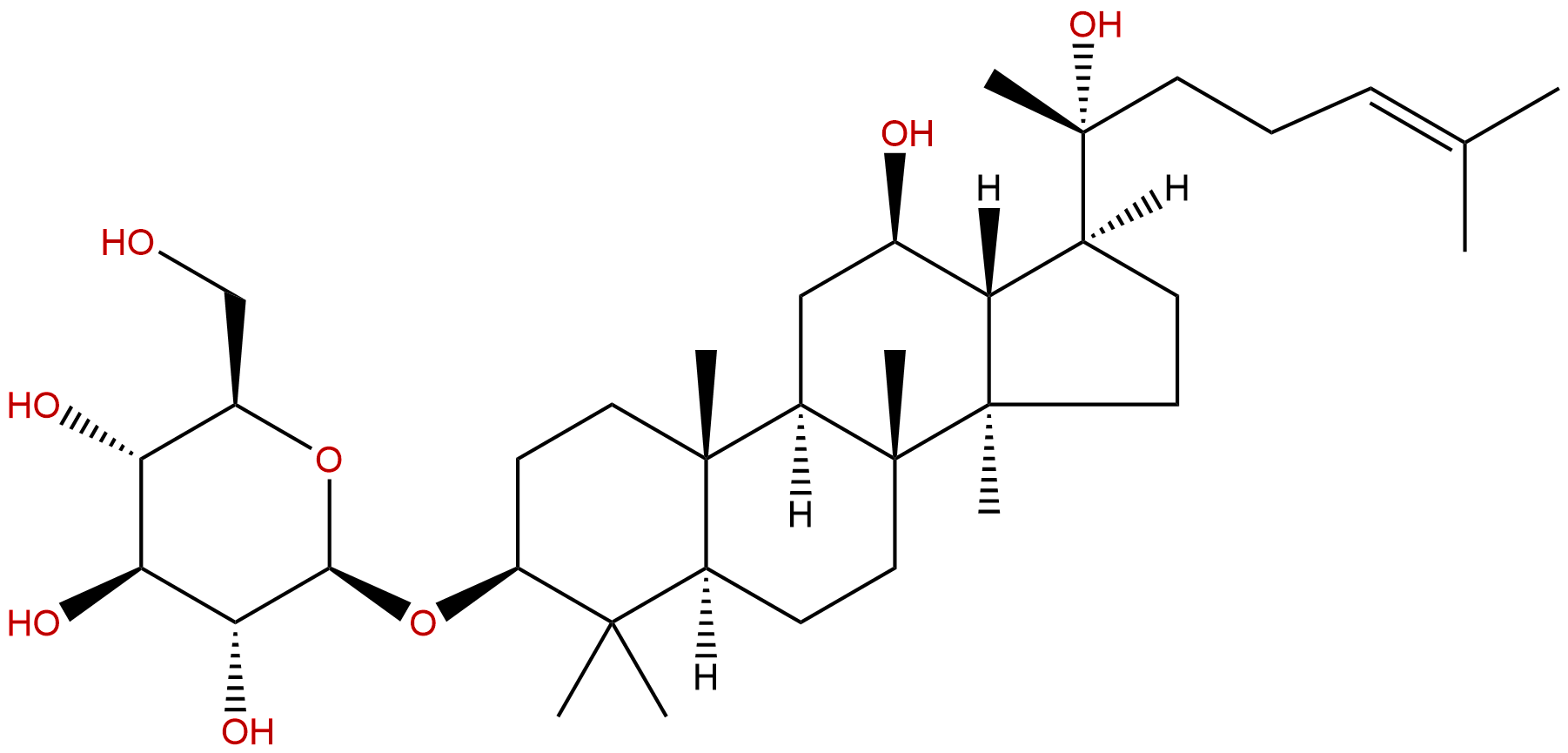
20(R)-Ginsenoside Rh2CAS No.:112246-15-8
|
||||||||||
 |
|
|
||||||||

| Catalogue No.: | BP0042 |
| Formula: | C36H62O8 |
| Mol Weight: | 622.884 |
Synonym name: 20(R)-Ginsenoside Rh2
Catalogue No.: BP0042
Cas No.: 112246-15-8
Formula: C36H62O8
Mol Weight: 622.873
Botanical Source: Panax ginseng
Purity: 20%, 95%, 98%
Analysis Method: HPLC-DAD or/and HPLC-ELSD
Identification Method: Mass, NMR
Packing: Brown vial or HDPE plastic bottle
Can be supplied from milligrams to grams, up to kilograms.
Inquire for bulk scale.
The purity(assay) of 20%, 40% and 90%, 95% is available for food, nutrition and cosmetics request, except for R&D and reference standard.
Descriptions:
Ginsenoside Rh2 is one of the most active components of red ginseng, controlling cancer and other metabolic diseases including osteoclast differentiation; ginsenoside Rh2 can suppress RANKL-induced osteoclast differentiation in vitro and in vivo through the regulation of c-Fos and NFATc1 expressions, not excluding the involvement of NF-κB and ERK, it is also suggested to be developed as a therapeutic drug for prevention and treatment of osteoporosis.[1]
Ginsenoside Rh2 has antitumor, antidiabetic, antiallergic, and anti-inflammatory effects; however, the extremely poor oral bioavailability induced by its low water solubility greatly limits the potency of Rh2 in clinical use, the sulfated modification of Rh2 improved its water solubility and the sulfated derivatives could be more potential candidates for developing as anti-inflammatory agents.[2]
Ginsenoside Rh2 potently protects ischemia-reperfusion brain injury, also inhibits prostaglandin-E_2 synthesis in lipopolysaccharide-stimulated RAW264.7 cells, suggests it can improve ischemic brain injury.[3]
Ginsenoside Rh2 potently reverses memory impairment caused by scopolamine, it might improve learning deficits, also have the memory-enhancing effects of RGB.[4]
Ginsenoside Rh2 can suppress growth of uterine leiomyoma in vitro and in vivo and may regulate ERα/c-Src/p38 MAPK activity.[5]
Ginsenoside Rh2 can inhibit the tendency of apoptosis, and reverse the impaired β-cell growth potential by modulating Akt/Foxo1/PDX-1 signaling pathway and regulating cell cycle proteins, suggests its therapeutic potential in the treatment of diabetes.[6]
References:
[1] Long He, Junwon Lee, Jae Hyuk Jang,et al. Bone, 2012, 50(6):1207-13.
[2] Fu B D, Bi W Y, He C L, et al. Fitoterapia, 2013, 84(3):303-7.
[3] Park E K, Choo M K, Oh J K, et al. Biol Pharm Bull, 2004, 27(3):433-6.
[4] Yang J H, Han S J, Ryu J H, et al. Biol Pharm Bull, 2009, 32(10):1710-5.
[5] Zhu Y, Xu J, Li Z, et al. J Funct Foods, 2015, 18:73-82.
[6] Wang Y, Wang H, Liu Y, et al. Horm Metab Res, 2012, 44(1):33-40.
[7] H Li, P Y Li, P Yong. Natural Products Chemistry & Research, 2014, 1(1):1-5.
HPLC of 20(R)-Ginsenoside Rh2
